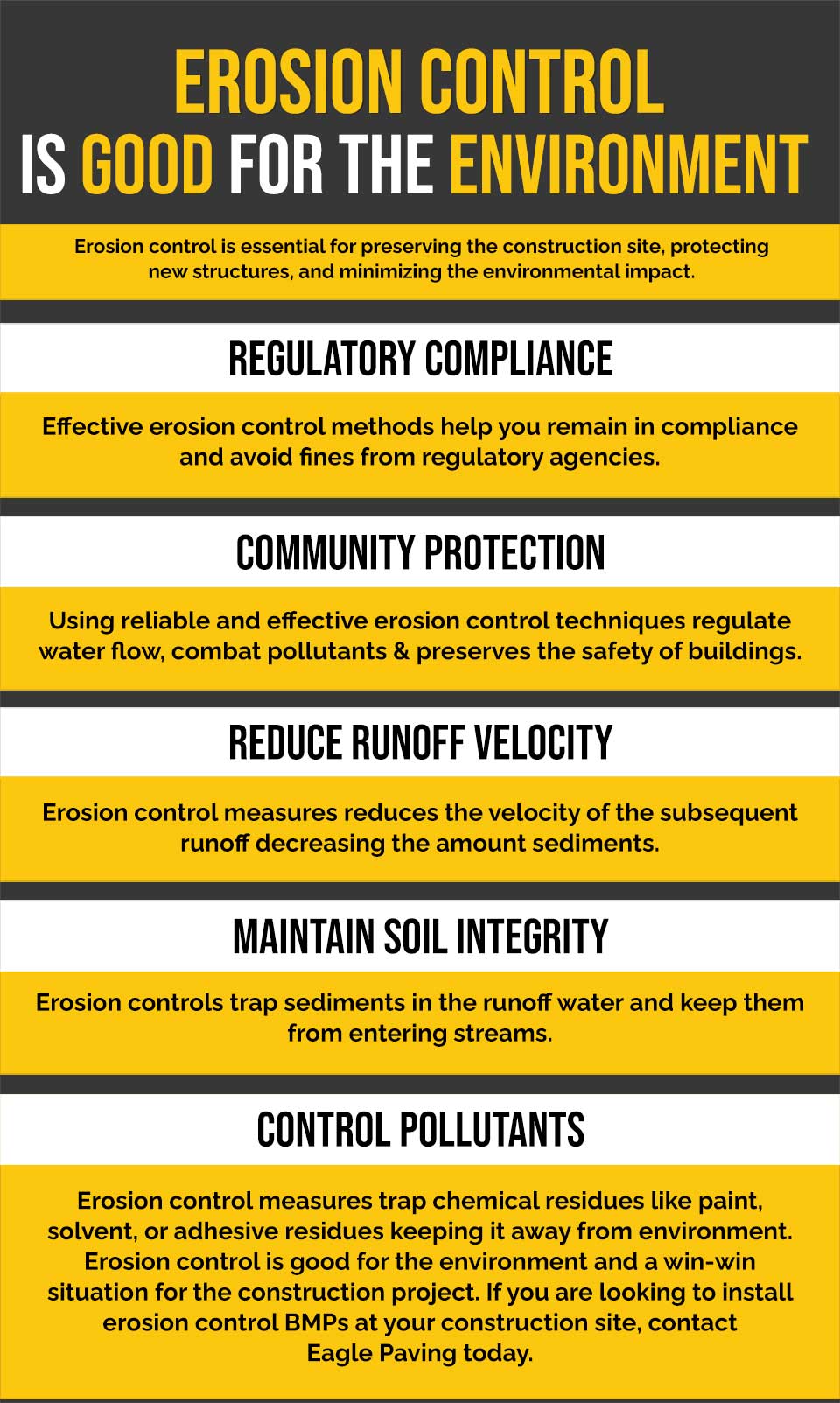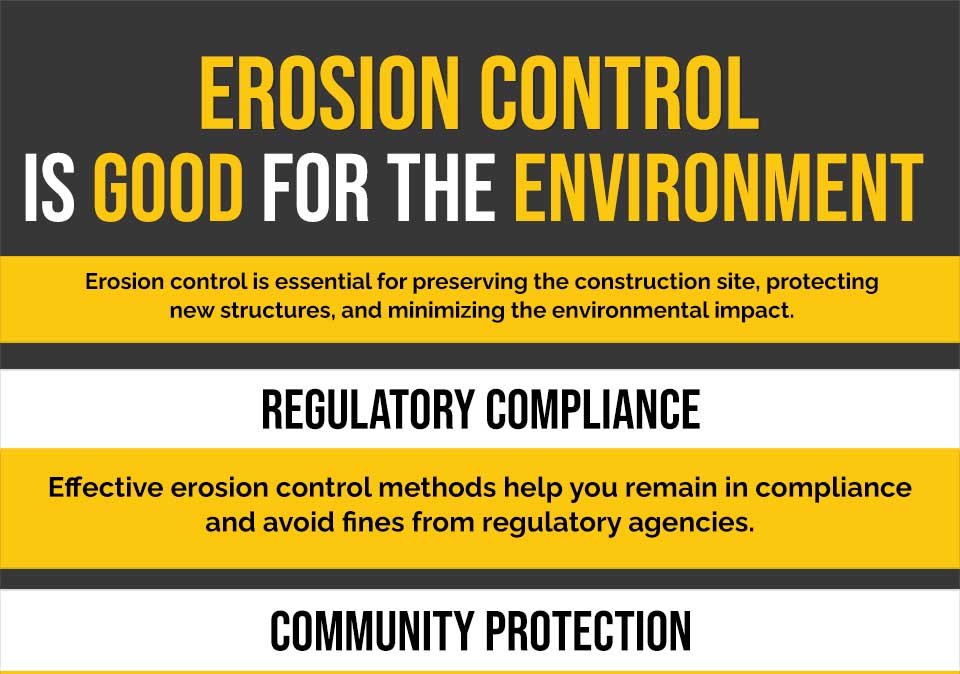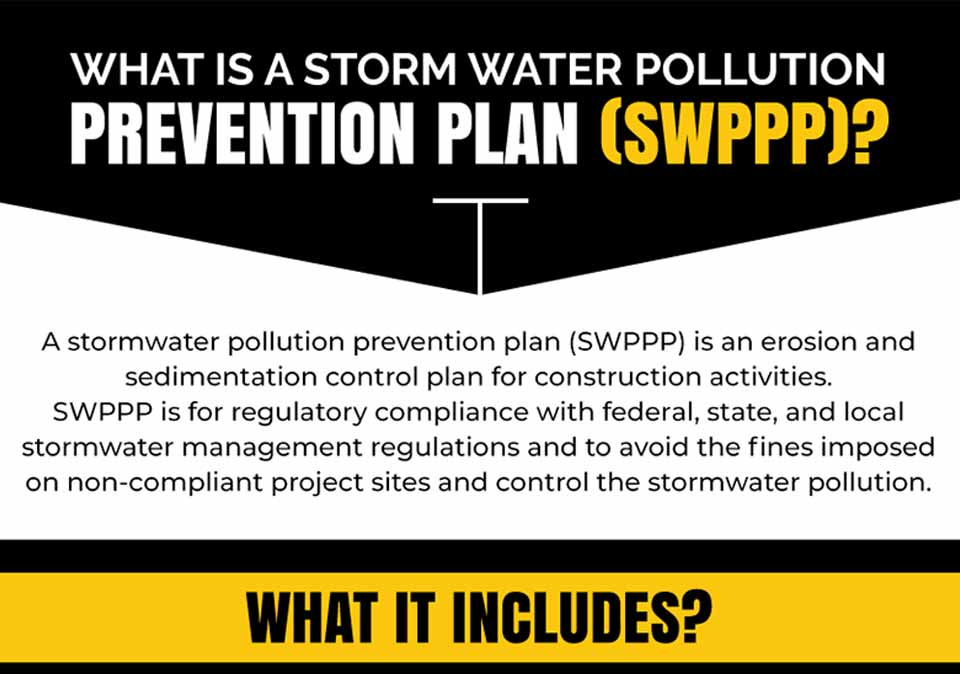
What is a Storm Water Pollution Prevention Plan (SWPPP)?
April 2, 2021Difference Between Rough Grading and Finish Grading
April 2, 2021Work on a construction site disrupts the ground leaving it vulnerable to erosion. Given the unpredictability of storms and rainfall, water runoff washes soil away, depletes the nutrients, alters the landscape, deposits sediments, and pollutes the nearby bodies of water. Erosion control is essential for preserving and protecting the construction site and nearby environment. However, erosion control measures add to the cost of the construction project. If not controlled, the cost can be even higher by attracting fines from state and local regulatory agencies.
What Is Erosion Control?
Erosion control is a practice to control soil, rock, and other particles displacing from the location by wind or water (stormwater runoff) from the construction and land development applications. The erosion from these sites has a significant impact on plants, wildlife, and surrounding properties. Effective erosion control helps minimize those harms.
Importance of Erosion Control
Erosion control at the construction site is important as excess dirt, construction materials, hazardous chemicals, and other pollutants are carried by the runoff water and into the surrounding water bodies. Here are a few reasons why erosion control is important.
Regulatory Compliance
For many construction projects, local or state regulations require to have erosion control methods. With effective methods in place, you remain in compliance and avoid fines from regulatory agencies.
Community Protection
Without erosion control measures in place, the topsoil at your construction site loses its ability to regulate water flow and combat pollutants as well as make land unstable. Additionally, a lot of soil erosion can bring water dangerously close to houses, businesses, and schools and increase the risk of flooding. Using reliable and effective erosion control techniques preserves the safety of buildings and their inhabitants.
Reduce Runoff Velocity
When construction sites have erosion control measures like blankets, straw wattle, etc., the layer absorbs the energy of the rain as it hits. Thus, it reduces the velocity of the subsequent runoff. The slower runoff carries only a small amount of sediment.
Maintain Soil Integrity
Erosion controls like silt fences, rock bags, etc. act as filters that trap sediments in the runoff water and keep them from entering streams. This helps maintain the integrity and absorptive capacity of the soil, preserving its integrity.
Control Pollutants
When sediments from the construction site wash away in the runoff, they carry chemical residues like paint, solvent, or adhesive residues. These pollutants deplete the water quality, restrict vegetation growth, and poison local wildlife. Using effective erosion control measures decreases these harmful effects.
Maintain Habitats and Biodiversity
Without erosion control, significant chunks of land erode over time, leading to habitat loss for thriving wildlife species in that area. When these species die or leave in search of new habitat, the area’s biodiversity diminishes. Erosion control methods preserves habitats and help species flourish by keeping the soil in place.
With that said, erosion control is good for the environment and a win-win situation for you. So, if you are looking to install erosion control BMPs at your construction site, get in touch with Eagle Paving today. Environment protection is our number one priority and we implement the most effective erosion control measures.
 h
h


